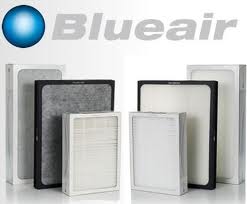 Stockholm, Sweden, February 23, 2015 – The yellow dust blanketing Seoul, the Korean capital, is a potentially toxic cocktail of several airborne pollutants, including dusts, solvents and metals emitted by vehicles, industry and natural sources. But seeking refuge inside as advised by local authorities is only a very short-term solution, says Blueair the world’s leading supplier of premium indoor air purification technologies.
Stockholm, Sweden, February 23, 2015 – The yellow dust blanketing Seoul, the Korean capital, is a potentially toxic cocktail of several airborne pollutants, including dusts, solvents and metals emitted by vehicles, industry and natural sources. But seeking refuge inside as advised by local authorities is only a very short-term solution, says Blueair the world’s leading supplier of premium indoor air purification technologies.
“We cannot avoid breathing the polluted air even if we closet ourselves indoors because sooner or later it seeps in from outside,” said Bengt Rittri, CEO and founder, today. “The risks indoor air pollution pose to our general health are grossly underestimated by most people, including government health authorities in Europe, North America and Asia.”
Speaking at the company’s Stockholm headquarters, Mr. Rittri said the U.S. Environmental Protection Agency (EPA) has repeatedly warned indoor air can be up to 100 times more polluted than that outside. Indoor pollution stems from the accumulation of pollutants such as bacteria, molds, viruses, dust mites and pollen as well as chemical pollutants resulting from smoke, building materials and volatile organic compounds (VOCs) such as paints, varnishes, and scores of cleaning, disinfecting, cosmetic, degreasing, and hobby products.
“It’s been said that walking into a modern building can be compared to placing your head inside a plastic bag filled with toxic fumes. That is extreme, of course, yet there is growing scientific evidence indicating indoor environmental exposures are increasing our burden of respiratory and other illnesses,” said Mr. Rittri.
A University of Buffalo study from 2012 found that indoor air pollution that generates fine particulate matter was a key contributor to the high rates of lung cancer among the Chinese women participating in the research program, despite the fact that few of them smoked. The U.S. EPA has also flagged that indoor air pollutants rank among the top five environmental risks to public health, while the U.S. Department of Labor notes poor indoor air quality has been linked to symptoms like headaches, fatigue, trouble concentrating, and irritation of the eyes, nose, throat and lungs.
 Sold in over 50 countries around the world, Blueair delivers home and office users more clean indoor air for enhanced user health and wellbeing faster than any competing air purifier thanks to its commitment to quality, energy efficiency and environmental care. A Blueair air purifier works efficiently, silently to remove 99.97% of allergens, asthma triggers, viruses, bacteria and other airborne pollutants.
Sold in over 50 countries around the world, Blueair delivers home and office users more clean indoor air for enhanced user health and wellbeing faster than any competing air purifier thanks to its commitment to quality, energy efficiency and environmental care. A Blueair air purifier works efficiently, silently to remove 99.97% of allergens, asthma triggers, viruses, bacteria and other airborne pollutants.
